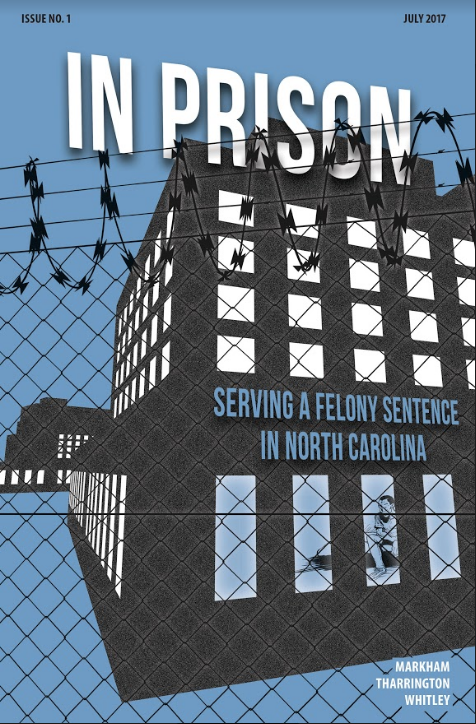A team based out of the University of North Carolina (UNC) has created a young adult graphic novel, In Prison: Serving a Felony System in North Carolina, detailing the workings of the state prison system as an educational booklet for those admitted.
Professor James Markham, who teaches at the UNC School of Government, enlisted Shane Tharington of the North Carolina Department of Public Safety as a co-author, and Jason Whitley, a web developer at the Eshelman School of Pharmacy, as the illustrator.
The book, which is 12 pages long and was published in August, can be bought in packs of ten for $16 on Amazon and on the UNC School of Government’s webpage. The inmates and staff of the Correction Enterprises Print Plant printed and assembled the books.
Markham and Tharrington had known each other for years before working on the book, having participated in multiple training and information sessions together. Markham has also done presentations at the Department of Public Safety and Tharrington at UNC’s School of Government.
“I am very proud that [Markham] asked me to be a part of the book’s creation, and we, along with the book’s artist, Jason Whitley, are extremely pleased with the final product,” Tharrington said.
Whitley works as a full-stack web developer but has held past careers as a comic-strip artist, traditional artist and editorial illustrator. He welcomed the opportunity to return to making art.
“I was looking for an impactful art project to work on when [James] approached me to illustrate In Prison. In Prison and its upcoming sequels give me the chance to perform public service for inmates and their families, lawyers, judges and the general public, while doing something that I love to do,” he said.
Tharrington and Markham created the outline for the book, with Whitley providing sketches as they went along.
“Over the course of multiple revisions, sometimes the visual metaphors failed, so we brainstormed until we got visual solutions that communicated effectively,” Whitley said.
Currently, the book is on limited printing.
“[At] this point, the book has been distributed to select staff and inmates within my agency and staff at UNC,” Tharrington said. “Our plan is to develop a survey to get and be able to analyze feedback from a target inmate population consisting of newly admitted male and female offenders less than 30 years old. This will allow us to know how to improve the book for subsequent printings.”
Tharrington is invested in making sure that newly admitted offenders and their families are educated on the processes of an active prison sentence in North Carolina.
“For those first-time admissions, it can be, and often is, an overwhelming experience,” he said.
According to a document released by the North Carolina Department of Public Safety, state prisons held, on average, 1,525 males 21 and under and 2,942 females 21 and under each month in 2017. Of those tried, African Americans and American Indians were most likely to receive prison time, according a study by Prison Policy Initiative.
Markham and Whitley are currently working together on two additional books about other aspects of an offender’s journey through the criminal justice system.












